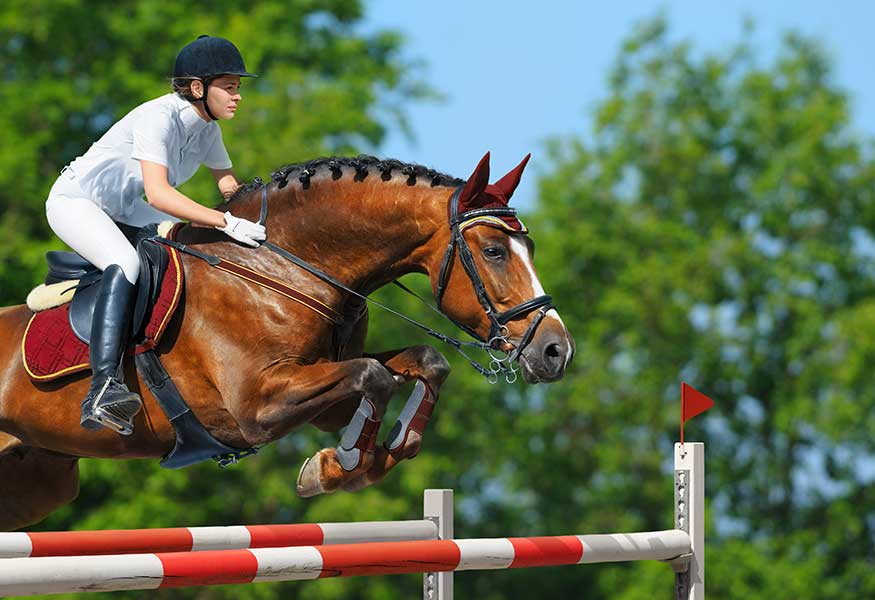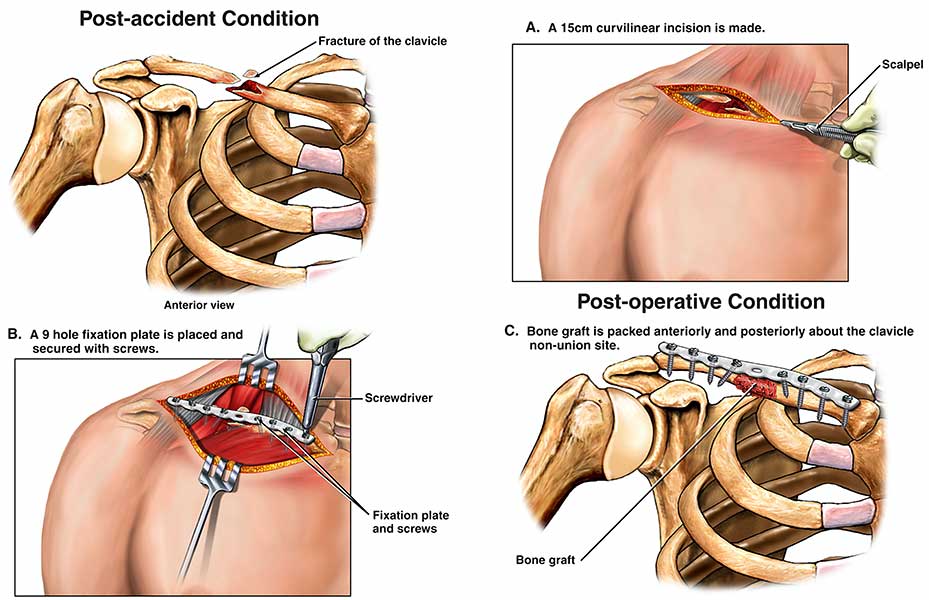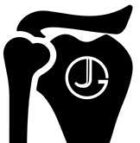The Collarbone (aka clavicle) is the bone that connects the top of the shoulder joint to the front of the chest wall. One of the commonest ways that the collar bone is broken is if you fall heavily onto your shoulder, such as a tumble on the ski slopes or a fall from your bike or horse.
The collarbone’s job is to act a strut to hold your shoulder – it connects your shoulder to the front of the chest wall. Most of the breaks that occur in the collarbone happen in the middle third of the bone.

Thankfully, the majority of collarbone fractures don’t need surgery to heal, but that doesn’t mean to say that all of these clavicular fractures heal without problems.
Sometimes if you fall and break your clavicle, the break may be so bad that the alignment of the two ends is really poor, and this might result in a collar bone that heals in a shortened way. This is a problem because the collarbone helps hold the shoulder in the correct position for its normal function. If your collarbone is short, because the break has healed in an overlapped position, it can lead to shoulder and neck pain.
A severely broken collar bone may be very unstable and also risk damage to the soft tissues around it and the skin. If this is the case surgery may also be recommended.

If you’ve fallen heavily onto your side of shoulder and if you have pain, swelling and bruising on the front of your chest, you may have a fracture of the collarbone. They can be extremely painful, because it’s very difficult to keep the fracture ends from moving – the collarbone is connected to your chest and your shoulder, and it will hurt to cough.
First, we take some X-rays to determine the extent of the break, and the position of the fractured ends. I’ll want to know if the fractured ends are overlapped, or in a bad position.
If the break is in good alignment, then it’s likely that it will heal well without surgery, by resting the arm in a sling, until it’s comfortable enough to move. You’ll probably find that you want to use a sling in the daytime for at least 2-3 weeks. At night, placing a pillow between your arm and your body may make sleeping more comfortable.
Healing takes around six to eight weeks, and physiotherapy will help you to regain the movement in your shoulder and arm, which may have stiffened up whilst you’ve been the sling.
Returning to impact sports takes a little longer – probably until three months from the time of your break.
Sometimes the break isn’t in good alignment when we X-ray it, or sometimes despite rest, the collarbone doesn’t heal. This is when we may need to consider surgery.
A very shortened collar bone might impact on the function of the shoulder joint, and some patients prefer that we fix the break surgically to ensure the best alignment of the bones.
Some of my patients are unhappy about being left with deformity of the contour of the collarbone. They don’t like how the break looks and feels and would rather that it was surgically fixed restore the contour of the bone.
Below is an xray showing a broken collar bone in red

Surgery to repair the collarbone takes place under a general anaesthetic. An incision is over the area of the fracture, and the ends of the bones are realigned in the correct position. The break is usually repaired with a metal plate and screws
We generally ask patients who are going through the surgery to rest the shoulder for a couple of weeks but you can move it gently as your pain allows. It will usually take around 6-8 weeks to heal completely.
It’s very important to have physiotherapy to restore the normal shoulder movements and to be guided back to the sports and activities you love.
